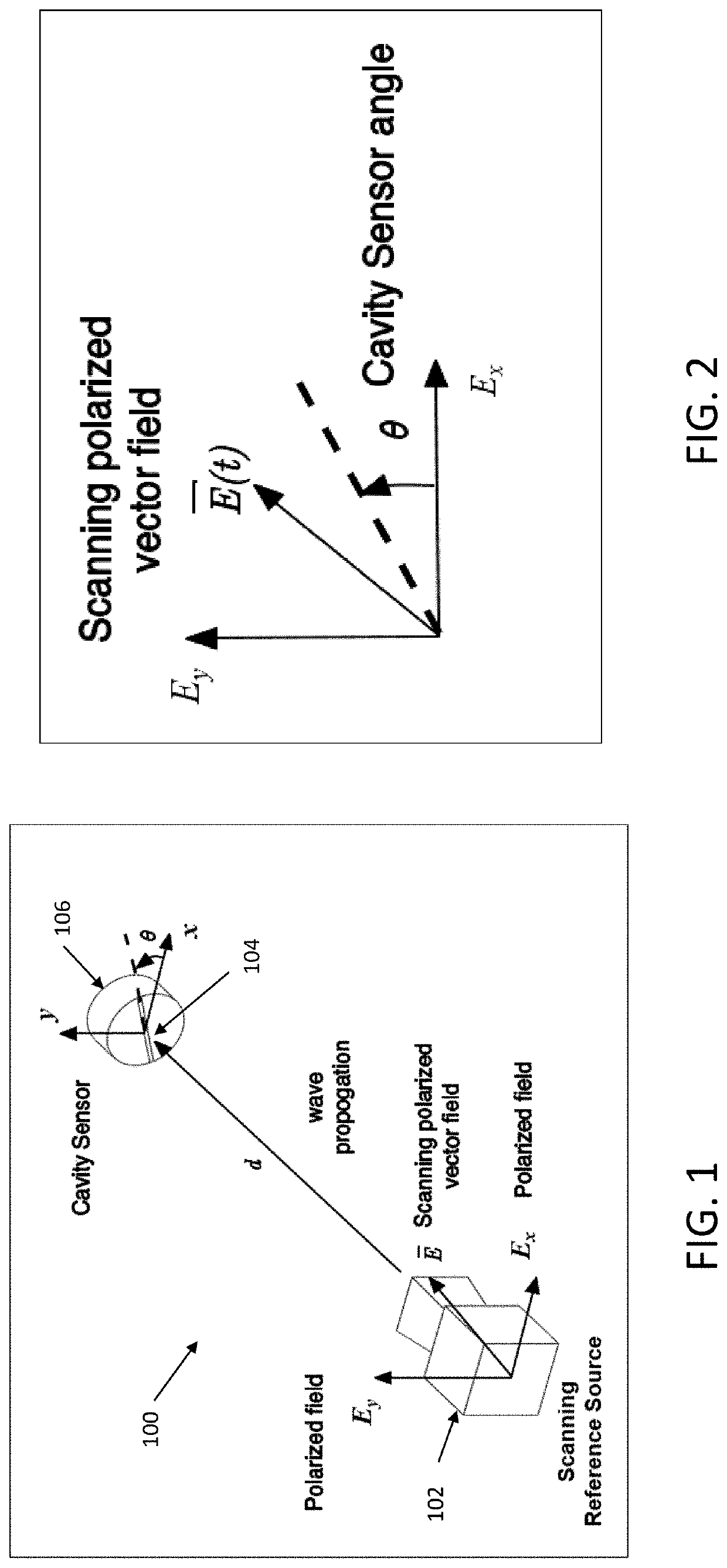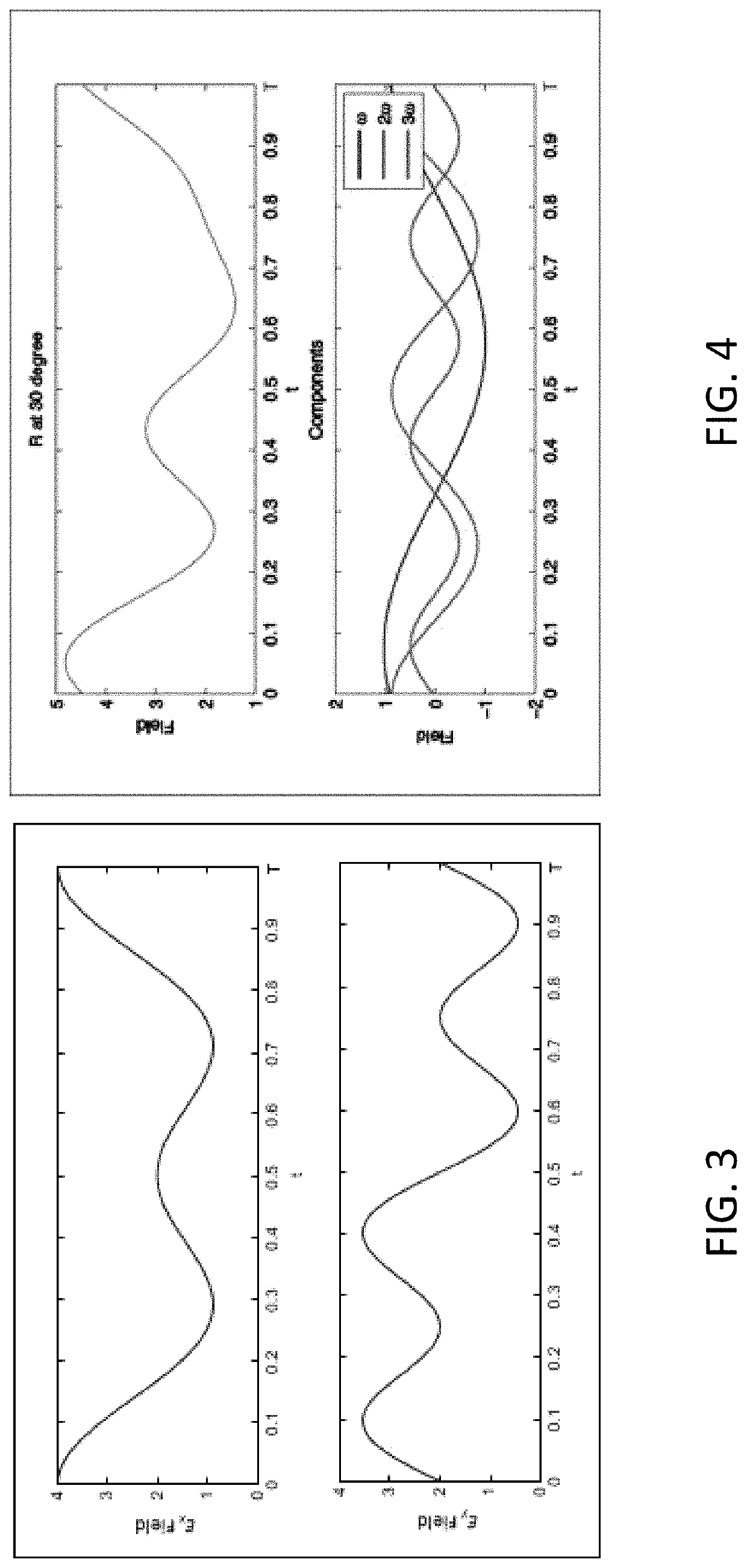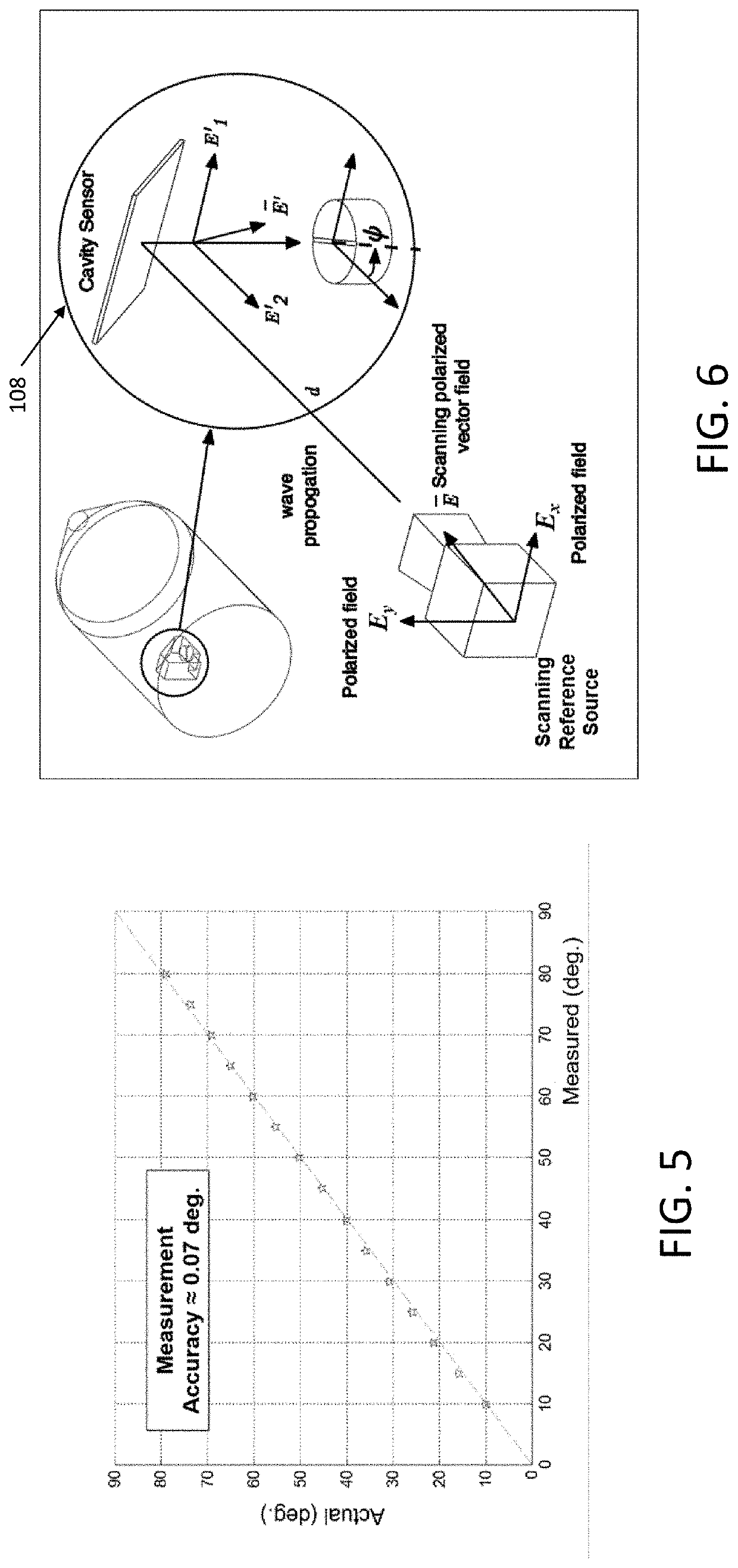Non-GPS methods and devices for refueling remotely piloted aircraft
a remote piloted aircraft and non-gps technology, applied in the field of polarized rf sensory system, can solve the problems of reducing the accuracy of gps signals, requiring speed, stealth and payload, and being unable to use current long-endurance planforms, so as to reduce power requirements, work reliably, and increase accuracy
- Summary
- Abstract
- Description
- Claims
- Application Information
AI Technical Summary
Benefits of technology
Problems solved by technology
Method used
Image
Examples
Embodiment Construction
Polarized RF Scanning Reference Source and Geometrical Cavity Sensory System for Full Orientation and Position Measurement
[0045]The relative navigation technology for a refueling system for remotely piloted aircraft (RPA) is based on “Polarized RF Sensory System” technology. Such technology is not based on a GPS signal.
[0046]A basic sensory system 100 consists of a scanning polarized RF referencing source (field transmitter) 102 and a receiving geometrical cavity sensor 104 (or cavity sensor for short) as shown in FIG. 1. The design and operation of the system 100 is best described as configured for measuring the roll angle of an object 106 to which the sensor cavity 104 is attached as shown in FIG. 1. In this illustration, the roll angle of the object 106 relative to the scanning reference source 102 is indicated as θ, which indicates the angular orientation of the cavity sensor 104 (and attached object) about the direction of the transmitted wave propagation.
[0047]A Scanning Polar...
PUM
 Login to View More
Login to View More Abstract
Description
Claims
Application Information
 Login to View More
Login to View More - R&D
- Intellectual Property
- Life Sciences
- Materials
- Tech Scout
- Unparalleled Data Quality
- Higher Quality Content
- 60% Fewer Hallucinations
Browse by: Latest US Patents, China's latest patents, Technical Efficacy Thesaurus, Application Domain, Technology Topic, Popular Technical Reports.
© 2025 PatSnap. All rights reserved.Legal|Privacy policy|Modern Slavery Act Transparency Statement|Sitemap|About US| Contact US: help@patsnap.com



